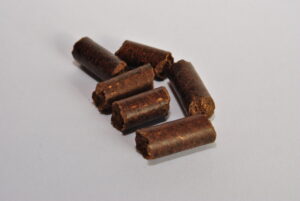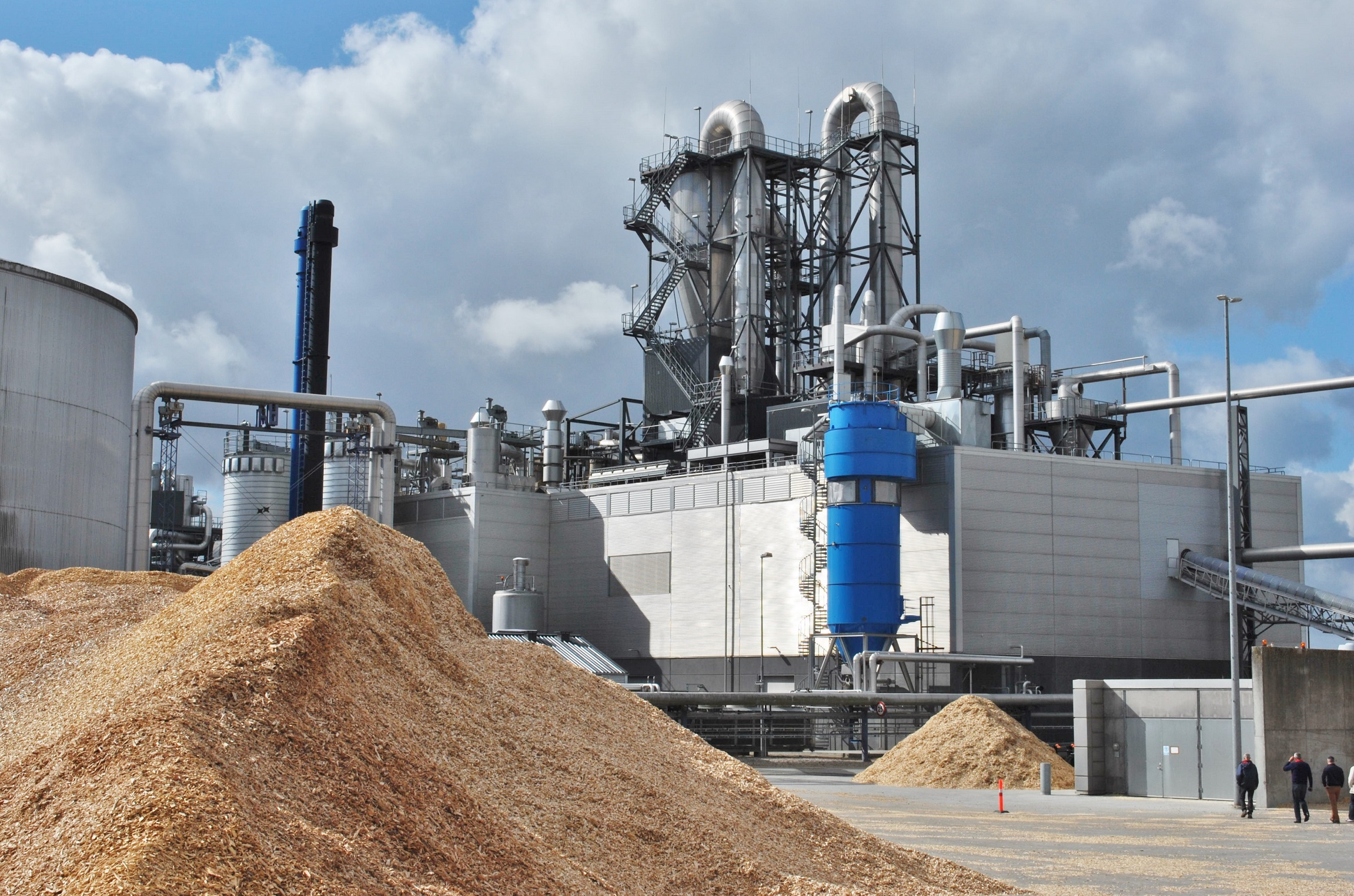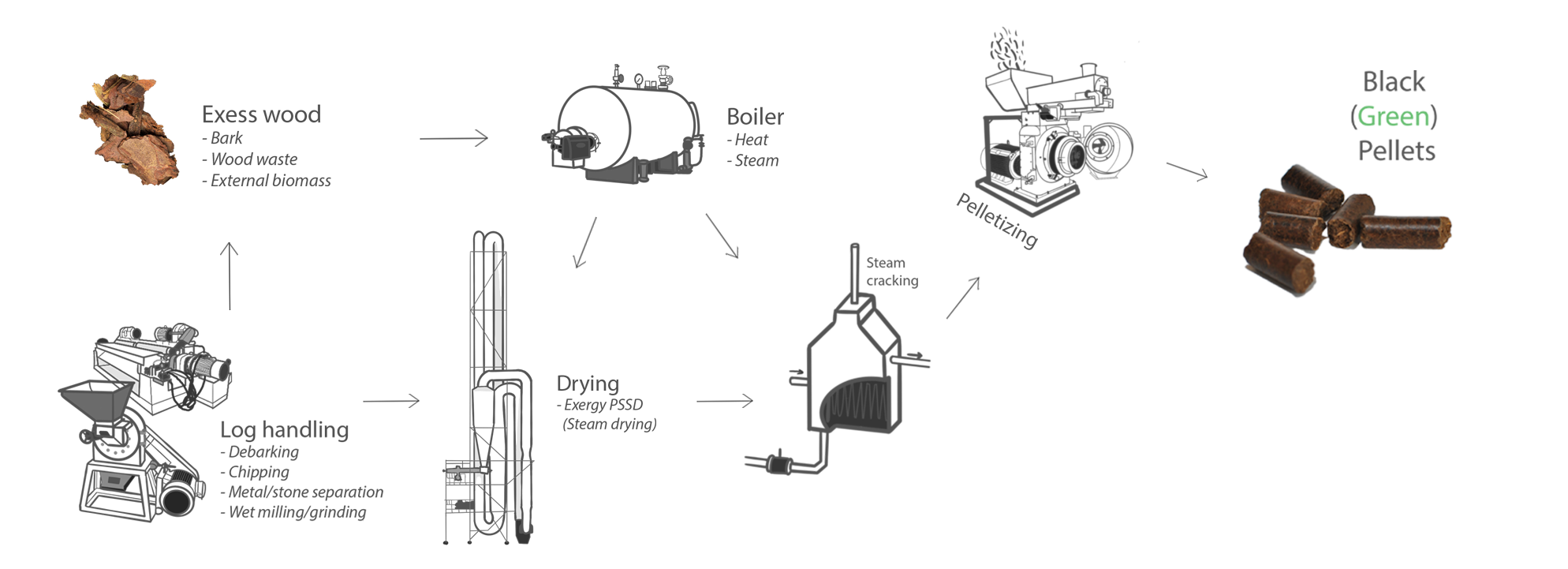 Although so-called black pellets are widely seen as a superior fuel compared to conventional white pellets, their uptake has remained modest. One reason is higher costs associated with production, something that Swedish Exergy and Jalo Biopellets aim to address in a joint project.
Although so-called black pellets are widely seen as a superior fuel compared to conventional white pellets, their uptake has remained modest. One reason is higher costs associated with production, something that Swedish Exergy and Jalo Biopellets aim to address in a joint project.
With ambitious goals set for reducing greenhouse gas (GHG) emissions, biomass is a go-to renewable energy source. However, untreated, biomass has numerous challenges such as low energy density, high water content, difficulty storing and troublesome handling, therefore, some processing of the biomass before producing energy is necessary for maximizing the benefits.
Biomass pellets are a popular solid biomass fuel type and are usually produced from wood wastes, forestry residues and agricultural residues.
But the main benefit is the high combustion efficiency when combusted due to the density and low moisture content.
Torrefaction or steam explosion for black pellets
Black pellets are generally produced by first using either one of two processes, torrefaction or steam explosion to treat the feedstock prior to pelleting. In the former, the biomass is heated up to 280-320˚C in a low oxygen environment for a certain amount of time.
Torrefaction is often used as a pre-treatment step for biomass gasification and co-firing of biomass with coal.
In the latter process, the water content, cellulosic sugars and other volatile organic compounds (VOCs) are removed from the biomass to create a solid biomass fuel with similar characteristics to fossil coal.
Either way, the drying of the feedstock is a critical process step that requires energy and as a result, can become a crippling cost item as recent geopolitical events have shown.
Steam drying technology
With steam explosion, pressurized steam at a high temperature followed by a sudden decompression is used to create black pellets.
The process creates a rupture in the biomass fibre rigid structure which leads to an increased heat value, bonding property, bulk density and homogeneity to the biomass. During the process, merchantable biochemicals such as xylitol, furfural and acetic acid can be extracted from the condensate.
As the name suggests, Swedish Exergy’s core Exergy Steam Drying technology uses steam as the drying medium. Steam drying biomass with the Exergy Pressurized Superheated Steam Dryer (ExergyPSSD) provides enhancements such as a steam conditioned product, precise and uniform moisture, an open fibre structure and higher combustion properties as well as having the lowest lifecycle cost.

Commercially proven technology
Superheated steam as a drying medium brings a number of advantages; high heat transfer rate, high energy recovery, no emissions to the atmosphere, no risk for fire or explosion during operation and a short residence time. The technology has been operational in various
agro-industrial, food industry, forest industry, and municipal applications for over four decades. These include pulp- and paper, grain- and beet ethanol, palm oil processing, animal feed, wastewater treatment, and wood pellet plants.
“For biomass pellet production the bottom-line benefits are tangible and our dryer solution can provide the lowest energy consumption and lowest carbon footprint“, said Prem Verma, Managing Director, Swedish Exergy AB.
Prem Verma added that enquiries for new industrial applications in other sectors are numerous as energy efficiency and reduced carbon footprints “are fast becoming top of mind in keeping bottom lines in the black.”
Closed-loop system
The Exergy Pressurized Superheated Steam Dryer (ExergyPSSD) consists of a closed-loop system. Where the product i.e the raw material to be dried like sawdust, is conveyed by superheated and pressurised steam as the carrier. The steam is heated through superheated surfaces with either flue gas, steam or thermal oil as the heating media.
The dried product and superheated steam are separated in a cyclone and the steam is recirculated. If the product is very wet, part of the dried product is recirculated back to the mixer where it is mixed with the wet product. Water in the wet product becomes steam in the dryer that eventually can be reused in other processes.
Dutch black pellet project
Swedish Exergy is working together with Jalo Biopellets B.V, a Dutch biomass project developer, to develop a black pellet production facility in the Netherlands. The aim is to produce environmentally friendly fuel in form of black pellets, with little to no residuals while minimizing carbon dioxide (CO2) emissions.
With Jalo’s sophisticated process, a high-quality black pellet with a higher energy content can be produced from a low-quality raw material. A form of energy and residuals cascading takes place along the process steps – from the biomass, black pellets, liquefied food-grade CO2 and heat for the regional heat network which will result in a strongly negative carbon footprint, and additional revenue streams for the project.

The ExergyPSSD is perfectly suited for the project as the closed-loop design eliminates the emissions to the atmosphere. The excess steam produced from the dryer will be used for CO2 capture and district heating, creating negative CO2 as well as extra energy production.
This more than compensates for the energy required to power the dryer. Thereby the ExergyPSSD transforms the drying process, from usually the costliest and energy-demanding stage with the conventional dryers, into the most profitable and energy-efficient process step in the project.
“Integrating the ExergyPSSD into a black pellet production is easy and results in even better energy efficiency, providing significant savings both for the producer and the environment“, ended Prem Verma.
The project, which is currently in the final stages before the start of construction has a design capacity to produce 125 000 tonnes per annum of black pellets.